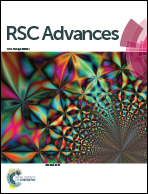Alkoxysilyl functionalized polynorbornenes with enhanced selectivity for heavy hydrocarbon separations†
Abstract
Two systematic series of novel polynorbornenes with varying ethoxy content were synthesized using addition-type and ring-opening metathesis polymerization techniques. Pure gas permeation studies revealed that ethoxy substitution doubled heavy hydrocarbon (C3+/CH4) selectivities and obtained high gas permeabilities compared to unmodified polynorbornenes, demonstrating the promise of these membranes. Ethoxy substitution enabled crosslinking via sol–gel routes, influenced gas permeation due to the high mobility and bond rotations of the pendant ethoxy groups, and produced more rubber-like polymers that demonstrated reverse selectivity, favoring permeation of heavy hydrocarbons over methane. The transport properties and crosslinking correlated with X-ray diffraction results, which demonstrated that pendant ethoxy substitution increased intermolecular spacing and subsequent crosslinking of the films decreased intermolecular spacing. The synthesized polymers were further characterized spectroscopically and thermally by FTIR, 1H-NMR, TGA and DMA. Success of the polymerizations varied with catalyst type and reaction conditions, which had profound effects on both molecular weights, yields, as well as processability.


 Please wait while we load your content...
Please wait while we load your content...